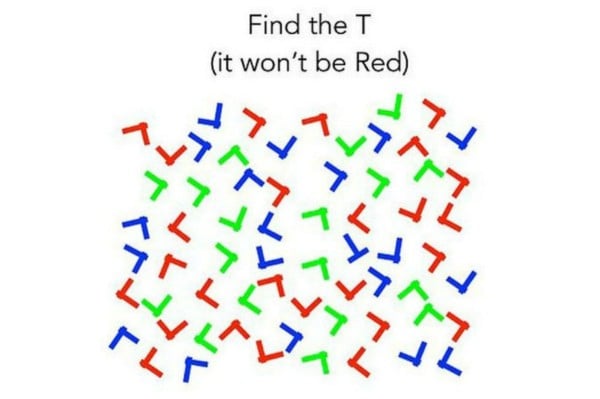
Think you have razor-sharp focus? Let’s test it.
Look at the below puzzle, and try to find the ‘T’ hidden amongst the ‘L’s. You have one clue: The ‘T’ won’t be red. If you can find it in under 10 seconds, you can feel pretty special:

How’d you go? Did you nail it? Or are you currently struggling with the temptation to pull out your own eyelashes?
The test is the creation of John Hopkins University – who say the instruction to ignore red symbols actually slows people down rather than aiding them.
“Individuals who explicitly ignore distracting information improve their visual search performance, a critical skill for professional searchers, like radiologists and airport baggage screeners,” lead author Corbin A Cunningham said in Psychological Science.
Didn’t manage to find it? Here it is:
Top Comments
Well, got it quickly....once I read the instructions properly lol. I saw the word red and couldn't find the T (I didn't peek at the below pic showing where it was). Then when I actually read the instructions about it NOT being red, I found it within seconds.....hmmmm what does this say about me and instructions :/
Found it straight away, paid no attention to the instruction that it wouldn't be "red". I'm good at scanning!